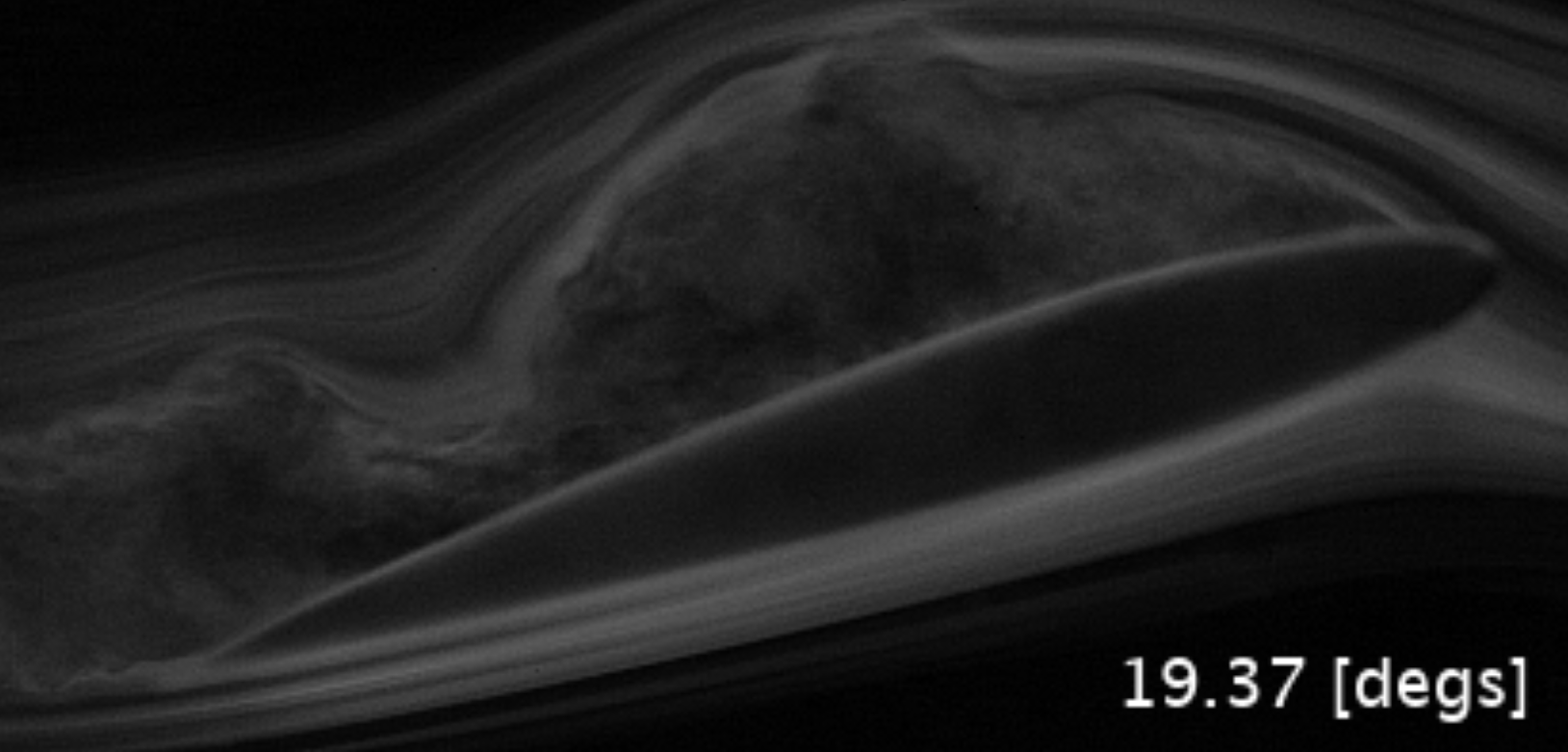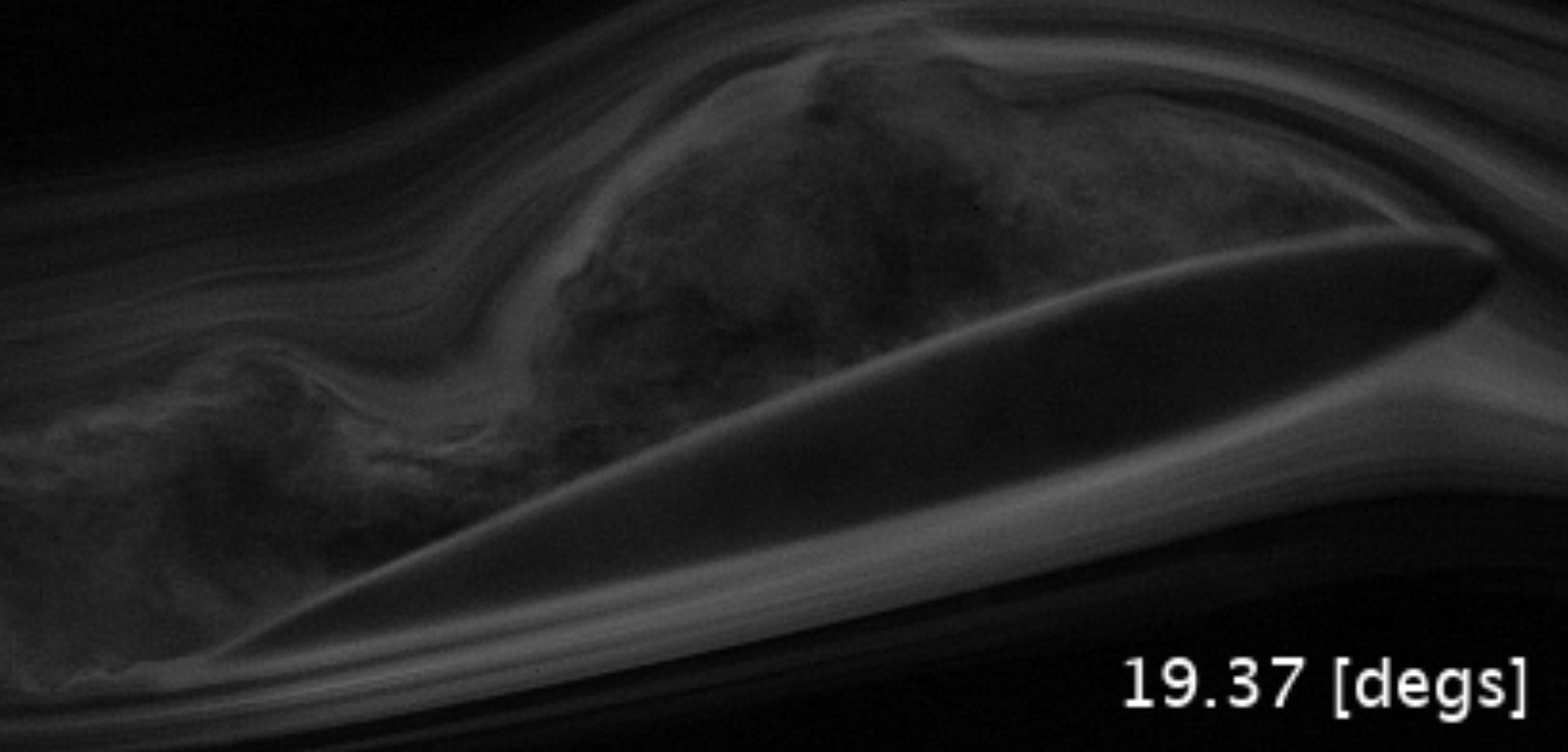Dynamic Stall
Dynamic Stall delay using High Frequency Plasma Actuation


The delay of dynamic stall is highly desirable for rotorcraft, fixed wing aircraft, and micro air vehicles. The defining features of dynamic stall are an aggressive increase in lift followed up until the dynamic stall vortex separates leading to an abrupt loss of lift. The strong loss of lift is preceded by a change in pitch moment from pitch up to pitch down.
From an aircraft perspective, the airfoil can undergo structural damages from twisting and bending forces induced by the occurrence of dynamic stall. Aero structural interactions can lead to cyclic behavior compounding damage. Besides structural preservation, delay of dynamic stall is desirable as a method to increase aircraft performance. In the case of fighter jets performing high alpha maneuvers, higher angles of attack can be achieved were dynamic stall to be delayed. For rotorcraft, when performing cyclic control the blade undergoes cyclic pitching which is limited by dynamic stall. The classic example of rotorcraft, helicopters, use thin and long blades which are more susceptible to twisting and bending.